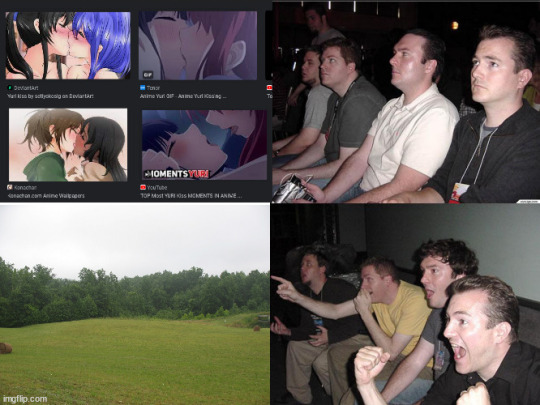#iori miyazawa
Text
YURI POLL ROUND 4

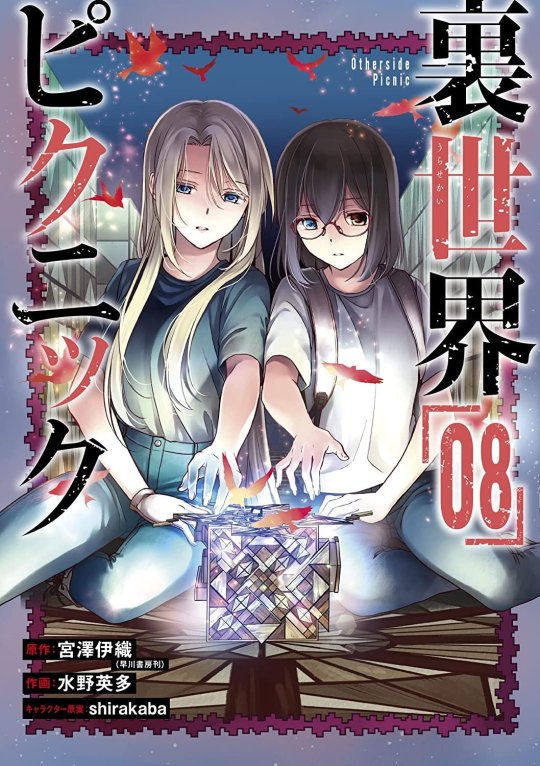
Note: Run Away With Me, Girl contains explicit sexual content and depictions of homophobia, abuse, and dubiously consensual sex acts (stealthing). Otherside Picnic contains horror elements as well as gore, body horror, gun violence, and loss of sanity; character backstories touch on themes of abuse, grooming, and cults. Reader discretion is advised.
#matches#run away with me girl#battan#kakeochi girl#otherside picnic#urasekai picnic#urapi#iori miyazawa#eita mizuno#yuri#gl#manga#wlw
310 notes
·
View notes
Text
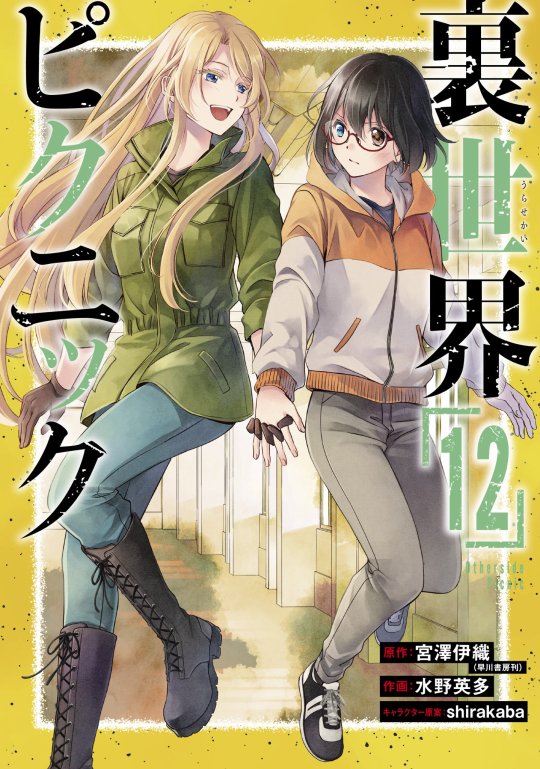
Otherside Picnic Vol.12
63 notes
·
View notes
Text
One thing I do want to clarify that I feel gets lost between the memes and the Miyazawa interview... is that the stuff he writes is like, genuinely explicitly gay. Girls kiss each other in Otherside Picnic*. Girls lust for other girls' bodies in Otherside Picnic. Girls talk about their married lesbian moms in Otherside Picnic. I won't throw in volume eight spoilers in specific but let's just say. Yeah it's a pretty damn literal lesbian relationship.
I love the jokes about Literal Yuri vs. "Miyzawan Yuri"/Yuri of Absence, I really do, but I want to stress that Miyazawa's yuri is itself in fact very literal with its f/f relationships and I highly recommend yuri fans check him out if you haven't already.
[*] this all refers to the novels by the way, since I know there's also an anime and manga and it gets some people understandably confused
#this is maaayyybe partially my fault for making up two sides of yuri for a joke#and now I think people are taking that seriously#but nah it's like. it's all tied up together you feel me.#my posts#yuri#Otherside Picnic#Iori Miyazawa
421 notes
·
View notes
Text
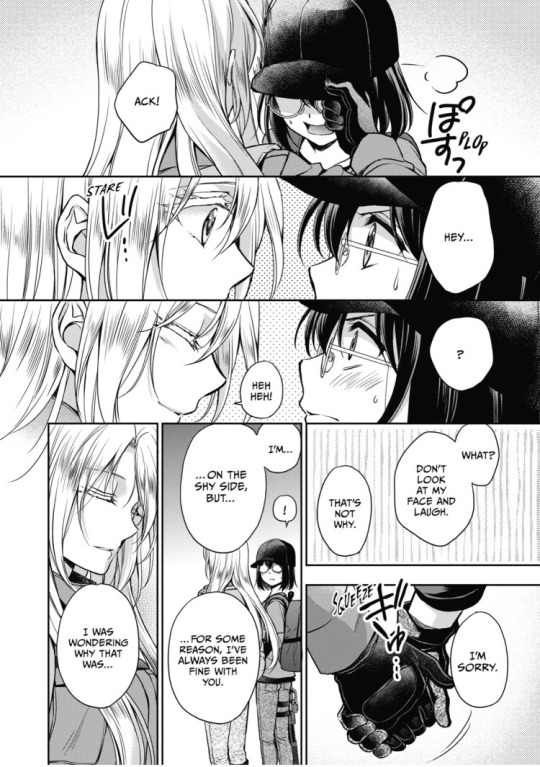
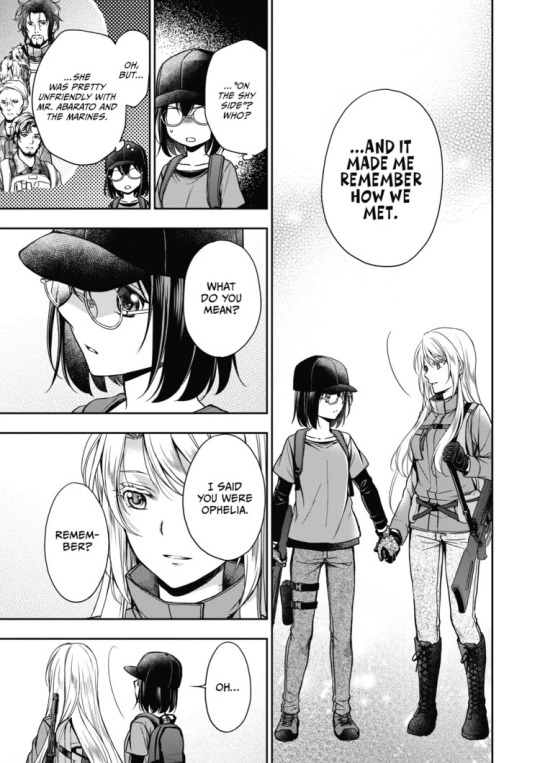

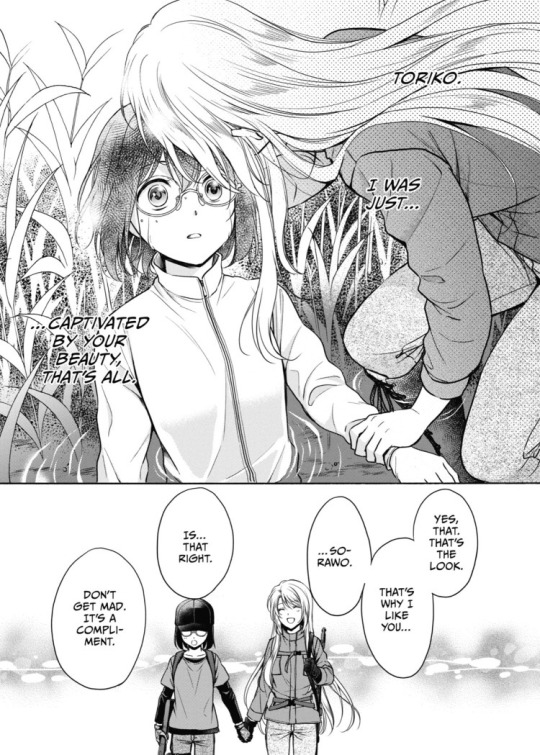
“Yes, that. That’s the look.”
(from the 4th volume of the Otherside Picnic manga)
#otherside picnic#urasekai picnic#sorawo kamikoshi#toriko nishina#manga#gl#yuri#iori miyazawa#eita mizuno#UraPi
232 notes
·
View notes
Text
The Queer Ultrablue Sublime
"Over two and a half years, I honestly don't know whether it's all over or not yet. In the end, I still don't understand why it happened, and nobody has been able to help me, nor is there anyone close to me who knows something about it. Was it summoned by some uncertain knowledge gained from somewhere, or perhaps there is some casual relationship to it? I don't know anything.
The only thing I can say is that it happened purely by chance. But if that were true, it's too harsh for something that happened entirely by chance. Am I being punished for some crime I committed? I never did anything bad though? And even if that's so...why? It's unfair. That's honestly how I feel."
Anonymous 2ch user, November 2009.
This quote, taken from the relatively famous Japanese netlore horror tale "Real" (translated by Tara A. Devlin in Kowabana: Origins), was written by a man who on the joking suggestion of a friend performed an action that allowed an entity to attach itself to him. The entity can be understood, lived with, and mindfully directed into a position where it can cause no harm, but will always remain a permanent fixture in his life, a constant source of looming dread both for himself and perceptive folks around him.
I'm a big fan of the story because the narrative voice seems to map the intersection between horror and queerness in a way I've seen few other horror stories do. I would guess a fair number of queer people reading this have expressed thoughts along the same lines of the above quote at some point in their journeys. If so, that connection between horror and queerness might feel intuitive. Don't worry if it doesn't, I'll take a moment to talk about it.
Horror thrives on exploration of the strange, the uncanny, the unknown and unknowable. Horror stories are our anxieties given narrative, and thus, given form and power. Our continued engagement with horror tests our comfort zones, prodding us to discover and settle our boundaries - self and non-self, acceptable and unacceptable, safe and dangerous.
A normative identity carries with it an expected set of social behaviors. In this system, personal boundaries are delineated like parcels of land and the amount of control one can expect to exert over those boundaries is tied up in the social status associated with the identity one is assigned. When a person attempts to escape this normative identity - defining their own boundaries, subverting expected behaviors - it is a constant outward battle to find a compromise between socially safe and personally acceptable allowing the self to thrive. In effect, embarking on this journey is akin to entering a horror story in which one is the protagonist.
The Internet has been profoundly impactful in enabling people to explore their own sense of self. In the past, a lack of outside support and affirmation may have once pushed someone into unhappily settling for a normative identity. However, modern connectivity means support and affirmation is accessible. The increased access to support has also allowed people to discuss and hone the language they use to describe themselves. These factors have resulted in a comparatively rapid erosion of old norms, and with it, exhumed deep anxieties around identity and one's place in the world. For better and worse, rejecting the old answers means dealing with the uncertainty of the new.
Netlore (short horror stories posted anonymously to Japanese boards) and its Western equivalent, creepypasta, often reflect this sense of dislocation and disorientation. Glimpses of forbidden knowledge drive one to insanity. The legacy of monstrous creatures and objects created in the past creates a lurking danger in the present. A wrong move saddles one with a lifetime of consequences. And yet, the possibility of a better future is often also embedded within these stories. Exorcisms can lift the weight of the past. Curse-casters can be identified and dealt with. In some stories, people are even provided with the knowledge and training to hold their own against the unrelenting presence of horror.
So with this connection between horror and queerness in mind, I want to talk about Iori Miyazawa's lesbian romance/horror novel series Otherside Picnic. Miyazawa's writing understands this connection at a fundamental level, and does an astonishingly good job at wielding the connection to explore the structure of human relationships.
The series is centered on Sorawo Kamikoshi, a 20-year old university student in anthropology. As the story opens, she exists in a socially fragile state - fixated on netlore in hopes it will lead her to an escape hatch from the crushing pressure of daily life. She finds that escape in the Otherside, a mysterious world seemingly generated around the most surreal and puzzling aspects of netlore. She quickly gets herself into trouble on her first real foray into the Otherside and is narrowly rescued from a near-death experience by Toriko Nishina. Toriko is another university student wandering the Otherside in search of her missing tutor, the woman who introduced her to the Otherside. Sorawo quickly (and begrudgingly) develops a strong bond with Toriko and the two start traveling to the Otherside together to unravel its mysteries and the strange entities that lie beyond it. Through their exploration, they increasingly find themselves surrounded by small community of other women with a connection to the Otherside.
On the surface, Otherside Picnic is an often silly action/adventure story which at first glance comes off more as a love-letter to netlore than a romance novel. However, as the story progresses it becomes clear that the horror is the scaffolding that supports the romance's growth. Badly traumatized by her previous cult life, Sorawo flatly rejects the common relationship structures that allowed her to be harmed. In the absence of those existing structures, she struggles to give form to her interpersonal relationships. Whether it's a quietly thrilling moment of holding hands in the midst of exploring a new world or a terrifying near-death experience while helping a friend, events push her to put words to the unspoken.
Sorawo understands netlore far better than she understands herself, and horror is necessarily the mirror in which Sorawo sees herself reflected. Nowhere is this dynamic more clear than with Sorawo's blossoming feelings for Toriko. Her discomfort with the direction Toriko wants to take their relationship often leads her to treat her own feelings on the matter as something just as mysterious and incomprehensible as the entities on the Otherside. It is only through overwhelming fear that Sorawo's comes to terms with how to properly approach her relationship with Toriko.
The power of queerness to terrorize and transform is thematically conveyed through the Otherside itself. Deep contact with the Otherside is repeatedly shown to irreversibly alter minds and bodies. Sorawo's eye, mutated by an encounter, is empowered to see the hyperdimensional aspects its landscape and phenomena. What at first might seem to be one thing turns out on closer inspection to be another. Looking too closely - trying to understand an object's "true" nature - is punching a one-way ticket to insanity. Entities so alien and incomprehensible that terror seems to be the only form of communication unexpectedly bleed into both Sorawo and Toriko's daily life. And yet, the fearful moments of truly understanding the Otherside, where the last ragged shreds of sanity and self-image hang by a thread, are the moments which Sorawo and Toriko take giddy joy and move forward from together. Their newfound knowledge makes them stronger, more resilient, more prepared for the next time, and most importantly, closer together.
The increasing feedback between horror and queer love over the course of Otherside Picnic's eight volumes provides Miyazawa with the opportunity to delve into themes of outsiderness, the shortcomings of normative identities, and the anthropological workings of social narratives. The story jumps - seemingly effortlessly - between Sorawo's bizarre internal monologue about the people and events unfolding around her, psychedelic (and genuinely unsettling) horror scenes, extremely sweet bonding moments, discussions about the nature of cognition and anthropology, and punchlines that would be right at home in a sitcom.
As disparate as the threads Otherside Picnic juggles can be, they all build towards a greater narrative purpose. The eighth volume of the series masterfully weaves them into a novel-length tapestry depicting the inner workings of loving relationships. By its end, the queer and sublime resonate so powerfully that they become indistinguishable, a narrative simultaneously formless and deeply structured.
Taking advantage of its position at the crossroads of horror and queerness, Otherside Picnic launches itself off in numerous directions to explore the process of discovering oneself and one's place in society. Where lesser works might be content simply reaffirm cultural norms through this process of discovery, Otherside Picnic often asserts that to categorize a thing necessarily loses something. It is the discovery and wholehearted embrace of what we find unique and special that gives something importance, not the labels we use to describe it. Call it romance, call it horror. Call it silly, call it serious. Call it a light novel, call it literature. However you want to categorize it, Otherside Picnic is worth a read.
77 notes
·
View notes
Text
#poll#dril#bocchi the rock#revolutionary girl utena#yuri#iori miyazawa#serial experiments lain#holy fucking bingle#the locked tomb#gideon the ninth
225 notes
·
View notes
Note
Straight up, Miyazawa Yuri ideology? Any links or places to start idk
Iori Miyazawa is a yuri writer who is the author of Otherside Picnic, an extremely good book series that is very explicitly yuri. But he is also well known for a number of interviews where he stated some things about yuri that, taken out of context, are extremely funny. The ideology of his that we joke about is the ability to see yuri in anything, the best example is something like how a picture of an empty bench is yuri. There are no girls in the picture, but you can imagine that at one point in time there were two girls sitting on the bench together, so the bench itself is yuri, this is yuri of absence. If you want to learn in more detail about how things like a movie soundtrack inspired by two wild beasts fighting to the death can be yuri, read the interview below
93 notes
·
View notes
Text
Otherside Picnic Volume 3

Yeah yeah, I'm pretty well behind on having only just read this volume, I know. I'm slow with a lot of light novel reading because I really want to be in it, you know? I want to savor every moment and feel like I don't want to put the book down while I'm reading.
And it just happened that lately I've really been craving for the horror and fear that stems from Miyazawa's expert understanding of net and folklore horror. So imagine my surprise when I pick up the volume and see just how far Shirakaba's art has come. Sure, it was never bad by any means. But my god, this volume's illustrations are amazing. The level of detail has skyrocketed, but at the same time a more clear and personal style appears. Heavy and dark contrast, an overall feeling of weight with each piece of art. Even though they can look vastly different due to moments, the overall feel of it remains. Really, hats off in that regard, truly some outstanding art.
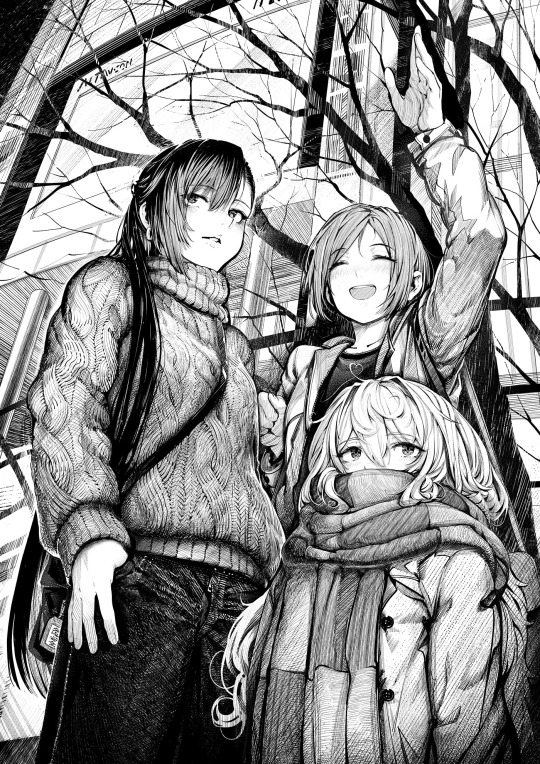

Of course, Miyazawa's writing withstands the shock of this incredible improvement from Shirakaba.
Their perception of horror - what comprises it and causes fear- remains absolutely expert. From the endings of the previous omnibus volume we continue the downwards spiral into Sorawo's personal hell. The types of contact, and the overall fear that arises from it are spine chilling.
Perhaps the biggest proponent is Miyazawa's ability to guide readers to answers. You can connect the dots as things go on, realize that there is something wrong, that there's a heavy feeling in your stomach and that all your hairs stand on end as your mind races to the finish line. It's such an incredible experience, where at times they don't even tell you the answer. Instead, you're left with a lingering feeling and concern for what things are and why.
Personally, it's my perfect definition of horror. Beyond us. You can come up with as many answers as you want to everything that unfolds, but for just as many things there are that Sorawo and Toriko resolve, there are just as many spine shudderingly disturbing pieces left hanging.
Of course, Otherside Picnic does like to remind readers that it's not just about disturbing and scary stuff. It's a healthy mix of characters that are poorly adjusted in the social sense (among many others), and their attempts to grope through their incredibly odd predicament. All of the characters that appear in this volume are so full. They're all hopeless and oddball versions of the more "simple" characters that they're portrayed as in the anime. They all have very glaring character issues, and present as far less perfect even in spite of how others view them. It's incredibly refreshing, and they all stumble through their interactions in an endearing and believable way that develops as the story continues.
The biggest thing from this volume though is just the sheer effort Miyazawa puts into the horror. It's not middle of the ground, on the spot horror stories they themselves come up with, but a far deeper and darker world that they draw from. Hours upon hours of historical and archival searching of books and webpages and chat forums to produce countless stories that end up interwoven and meld together into a cohesive framework to address the Ultra Blue Landscape via.
It's insane. Not only are we, as readers, attempting to understand the Otherside and its creators and/or inhabitants, Miyazawa is translating it. They're pulling from our reality, adding their own spin and twist to it, and spitting it out in the form of communication. The sheer talent to preserve the original value of the stories used, while at the same time repurposing them is incredible.
In terms of horror, I truly feel that Otherside Picnic stands comfortably separate from so much of what makes up the genre, not even just within the framework of animanga, but of modern media in general. So much of what's popular and talked about is on the absolute fringes of what horror is: that sense of dread and fear. Not 30 seconds of buildup into a single jumpscare reveal that the characters run away from. Rather, the tension building and things seeming wrong, like something is lurking around the corner and you absolutely must find out. Or that there's some terrible figure/creature staring right at you that has you frozen in place. Horror is not thriller, and Otherside Picnic continues to establish that beautifully.
Also, for the best reading experience, the anime OST is actually outstanding for furthering that fear. Plenty of songs that will put you perfectly on edge. You can find the full playlist right here.
#otherside picnic#urasekai picnic#裏世界ピクニック#sorawo kamikoshi#toriko nishina#iori miyazawa#horror novels#horror anime#anime and manga#light novel#light novel review#light novel recommendation
78 notes
·
View notes
Link
I wrote about Sappho fragment 2 and the queer resonances of empty landscapes. Through the lens of, uh, that one interview with Iori Miyazawa. I’m sending this blog out as a newsletter, so please sign up if you’re interested!
#Sappho#tagamemnon#yuri of absence#this too is yuri#lesbian history#miyazawan yuri#queer history#lgbt history#yuri#writing#blog post#classics#ancient greece#iori miyazawa#ancient greek literature#translations
37 notes
·
View notes
Text
ULTIMATE YURI-OFF: Round two

Having fully obliterated a promising contender, can Lambdabern defeat absolutely nothing at all?
94 notes
·
View notes
Text
YURIPOLL FINALE
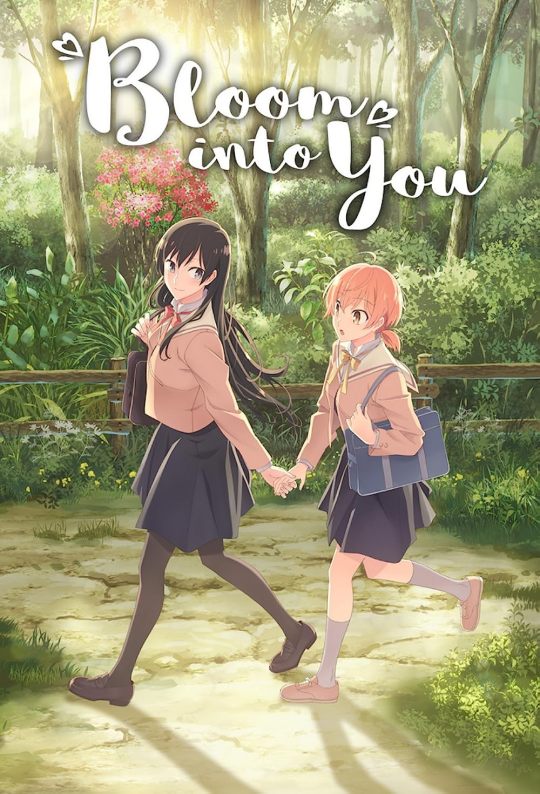
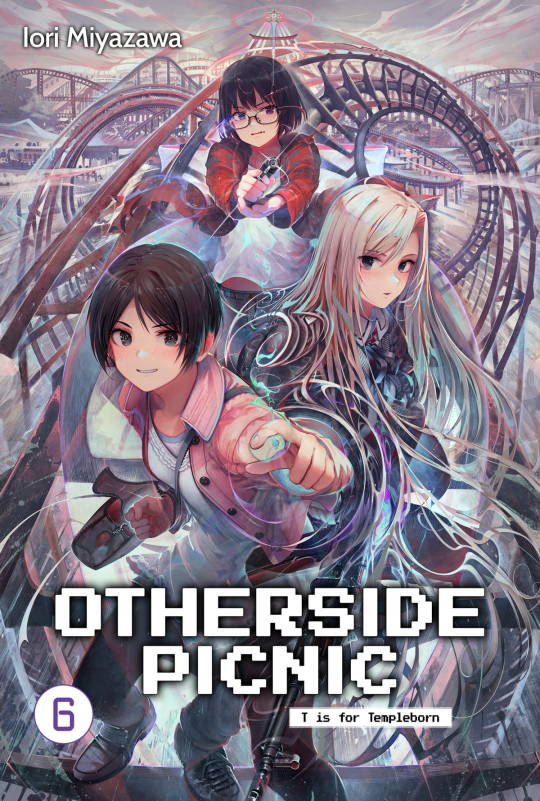
Note: Bloom into You contains some suggestive scenes and mild depictions of homophobia. Otherside Picnic contains horror elements as well as gore, body horror, gun violence, and loss of sanity; character backstories touch on themes of abuse, grooming, and cults. Reader discretion is advised.
#matches#yuri#gl#wlw#manga#bloom into you#yagakimi#yagate kimi ni naru#nakatani nio#otherside picnic#urasekai picnic#urapi#iori miyazawa#eita mizuno
162 notes
·
View notes
Text

Otherside Picnic - Volume 4 (manga)
94 notes
·
View notes
Text
Hey, so like in yuri polls I see a couple misconceptions about Otherside Picnic that kinda bother me. I'd sorta like to try setting the record straight on them:
"It's not actually yuri" - it is very much a slow-burn lesbian romance. Much of the slow burn comes from Sorawo working out her feelings as she grows out of the extremely weird and stark headspace she's in when the series starts. Yes, it's taken seven novel volumes (and counting) for SoraTori to work out what their relationship is, but at various points they have kissed, mutually expressed their love for one another, and worked through obstacles that threaten to kill their relationship. It's never been a "will they/won't they" drama, but one of a couple of women working through their past traumas while finding companionship in the ones they experience together.
"The author is a male who erases lesbians from yuri" - This is a really unfortunate takeaway from all of the "Yuri Made Me Human" screenshots. I think it's really easy to come away from seeing all of those screenshots thinking Iori Miyazawa is a galaxy-brain dude who sees everything *but* lesbians in the genre. But it's really worth remembering that the interview was basically him being asked to step in and explain yuri culture and literary techniques at a sci-fi panel.
A lot of what he says there is less an original philosophy than it is an attempt to summarize and distill ideas floating around the broader yuri writers' community. Even the infamous "yuri of absence" and "landscape yuri" are not about trying to strip lesbians out of yuri. They are attempts to isolate particular writing mechanics to show *why* they work so well in combination with yuri.
Also, to be blunt, I often pick up a really strong gender essentialist undercurrent to this particular criticism. It's weird.
It's totally okay to not like Otherside Picnic as a story. But please don't gatekeep it as being "not yuri" or accuse the author of appropriating yuri aesthetics just to win polls? idk
108 notes
·
View notes
Text

That’s it. I’m reading Otherside Picnic.
Screenshot taken from Yuri made me human — interview with Iori Miyazawa.
#mochats#iori miyazawa#yuri of absence#okay but there are many things in that interview that’s very profound#at least to me#beasties are yuri#he is right#also i relate so hard on being a wall/chair/houseplant thing when reading yuri#it is morally correct to imagine yourself as an unseen/inanimate force watching the unfolding of womans’ romance#what a lad#reading this made me feel something#it is yuri#Just read Otherside Picnic#I will be very normal about this manga
33 notes
·
View notes
Text

Girl...

14 notes
·
View notes
